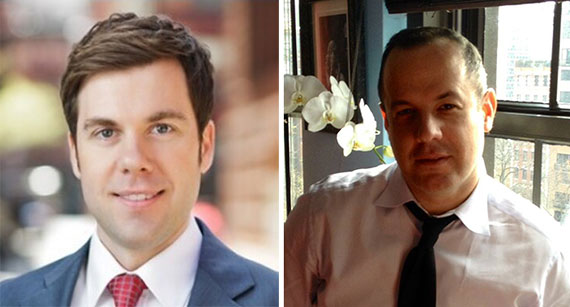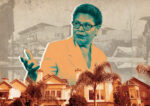Trending
Residential brokers playing both sides of the business
Top teams see up to one-third of their business from commercial sales

When Cheerland Investments plunked down $50 million for an Upper West Side parochial school last year, residential broker Austin Schuster of Sotheby’s International Realty found himself at the center of a decidedly commercial deal.
Cheerland, a Chinese developer, was originally a client of Sotheby’s colleague Nikki Field, whose team spent months scouring the city for investment deals. Through commercial brokers Bob Knakal and Hall Oster, then at the former Massey Knakal, Cheerland found 555 West End Avenue, the former St. Agnes Boys School, but the Chinese firm needed a development partner.
Enter Schuster.
At Field’s behest, he met with Cheerland with an eye toward matchmaking, and ultimately arranged a meeting with developer Cary Tamarkin. Cheerland and Tamarkin hit it off and are now partners on the Upper West Side condo conversion.
While Schuster said he has no plans to give up selling condos, co-ops and townhouses —the bread and butter of his business —he’s part of a cohort of residential agents who are also arranging deals involving investment properties, multi-family buildings and assemblages to developers clamoring for hard-to-find development sites.
[vision_pullquote style=”3″ align=”center”]
[/vision_pullquote]
While residential agents have dabbled in commercial sales before, the allure is greater these days, because brokering a deal involving a development site can be a path to selling the finished project. In a hot market, developers hungry for land are turning to residential agents to bring them off-market deals they learn about via their close ties to investors in new development condos and other connections in the neighborhoods they work in.
A number of enterprising residential agents, therefore, are bypassing their commercial counterparts for a piece of the action. “As I see opportunities, rather than call a commercial broker, I’m calling 10 developers,” Schuster said. “I’ve sold in most of their buildings, it makes sense to me just to call them up and see if I can make a deal.”
Similarly, Douglas Elliman’s Michael Graves brokered north of $300 million worth of commercial real estate this year, he said. And Nest Seekers International’s Ryan Serhant said he closed $100 million worth of commercial sales in 2014.
“When you work in the high-end residential market and the new development sector, your daily activities become intertwined with developers and investors and banks,” Graves said. “If you’re in the field as much as I am, we’re usually the first ones to know about a potential assemblage.”
Hungry for deals
There’s no question that the scarcity of development sites, high residential prices and investors eager for deals are fueling residential agents’ forays into commercial brokerage.
“It’s a bigger game,” said the Corcoran Group’s Evan Forray Church, who works in Williamsburg and started going after commercial business when he saw the neighborhood begin to change amid the recession and rezoning of the waterfront in 2009. “It was a new, emerging market that I wanted to capitalize on,” he said.
Last year, his team sold $90 million worth of real estate, 30 percent of which was commercial.

Ryan Serhant
Nest Seekers’ Serhant said that as agents vie for new development gigs, selling development sites is one way to prove your mettle, and hopefully end up selling the final product. “Why wait for a site to go into contract, then track down the developer and knock on their door? Why don’t I just start from ground zero?” he said.
Developers are hungry for a leg up in acquiring buildings or land, and they may turn to residential brokers who have their finger on the pulse of potential deals. “We’re the middle man, if you will,” said Elliman’s John Gomes, who sold $1.1 billion worth of real estate last year with business partner Fredrick Eklund, Serhant’s co-star on Bravo’s “Million Dollar Listing New York.” Commercial deals represent 10 percent to 15 percent of the duo’s business, and Gomes said they frequently field calls from developers hunting for opportunities.
Eklund and Gomes are in the midst of selling the 37 condos at DHA Capital’s 50 Clinton Street, a project they brought to the developer. They first worked with former owner Icon Realty Management, which bought the site for $7 million in 2012 and sold it to DHA for $28 million in 2014. The building’s total sellout exceeds $78 million. “We were working on this deal from the beginning,” Gomes said. “It was in the best interest of the developer who bought it to hire us.”
Off-market finds
Most of the commercial deals that residential brokers handle are off-market opportunities, which often flow organically from their daily business of selling apartments.
Elliman’s Patty LaRocco started selling commercial buildings in Tribeca, where she lived and worked for years. “I know a lot of building and loft owners,” she said. “When Tribeca was getting super-hot in 2005, they wanted to sell.”
She’s since branched out to other neighborhoods in Manhattan and Brooklyn and to date, she’s sold $150 million worth of commercial properties. For example, LaRocco has assembled several lots for Est4te Four — the developer behind 160 Imlay, where she’s the exclusive agent — including 64 Ferris in Red Hook, which Est4te Four bought for $17 million last year.
LaRocco’s commercial deals also include a former warehouse at 115 King Street in Red Hook, sold to developer SANBA, which is now building 22 townhouses at the site. LaRocco is the sales agent.
“I sourced it, sold them the land and [determined] the highest and best use of the property,” she said. “If you get embedded in a neighborhood, people come to you.”

From left: Fredrik Eklund and John Gomes
Gomes said he and Eklund only sell off-market commercial properties. “Once it goes to the public market, you can bet your bottom dollar it will be really expensive and there will be a lot of people competing,” he said.
Similarly, Elliman’s Robert Dvorin sold a one-story garage at 30 Thompson Street in May for $13.1 million to a joint venture led by Adam Weis’ Weis Group, Mavrix Group and Tribeca-based builder Walker Ridge. The seller was Empire Office CEO Peter Gaslow. The spot will soon see a Karim Rashid-designed boutique condominium rise seven stories with fewer than 10 units, priced upwards of $3,000 per square foot.
Commercial complexities
Still, brokering commercial deals isn’t for every residential agent.
Compass’ Leonard Steinberg, who is known for selling high-end new development condos, generally does not sell development sites. “We’ve helped with one or two along the way,” he said, “but we’re mostly focused on helping our developers evaluate the best and highest use of different sites they’re looking at.”
David Maundrell, president of aptsandlofts.com, also doesn’t sell sites, in part because of the complexities involved and also because many properties are sold via the open listing system, meaning there is no exclusive and any broker can bring a buyer. “My time is too valuable to be wasted running around on open listings,” he said.

Patty LaRocco
Sotheby’s Schuster said having a deal’s fee structure and confidentiality agreement established early on is key. “It’s more cowboy town in that world,” he said of the commercial market.
To be sure, commercial deals can be far more complex than residential sales, particularly if there are zoning and environmental restrictions. There’s also a longer due diligence period. “A lot can go wrong with a commercial deal,” LaRocco said.
Schuster agreed. He’s working with a seller who’s given him permission to bring in potential buyers. But, he said, “It’s just an opportunity. It’s not a done deal.”
The extra effort can pay off, though. Brokering development sites can be extremely lucrative. “That’s where I think the big brokers are making the biggest net income, not just selling condos anymore,” said Nest Seekers’ Serhant.
Typically, brokers earn 1 percent to 3 percent commission on a commercial deal. “Million-dollar commissions are not uncommon. [And] some people pay more for off-market deals,” Maundrell said. If the agents are tapped to sell the condos, they collect commission on those sales, as well. “The numbers are tremendous,” he added.
The high stakes, of course, means competition is high.
Elliman’s LaRocco said she doesn’t compete with big fish at commercial firms like CBRE or Eastdil Secured. “I don’t go after exclusives, I’ll work for a buyer with a specific need and get it for them,” she said. “It happens very organically.”
But other brokers said that, in essence, every deal they do is one that a commercial broker lost out on.
Town Residential’s Eric Sidman put it this way: “There’s so much money at stake, lots of people are chasing the same deals.”
In addition to brokering sites, some residential agents are dabbling in development themselves.
Sidman, for example, recently launched sales at a seven-unit condominium he developed at 629 Grand Street in Williamsburg, which is located about four blocks from where he lives. One-bedrooms start at $638,000, and there’s a two-bedroom that will ask $1.375 million. Four units were in contract by early July. “I used my market knowledge,” he said, “and built a product that I thought the market was really looking for.”




